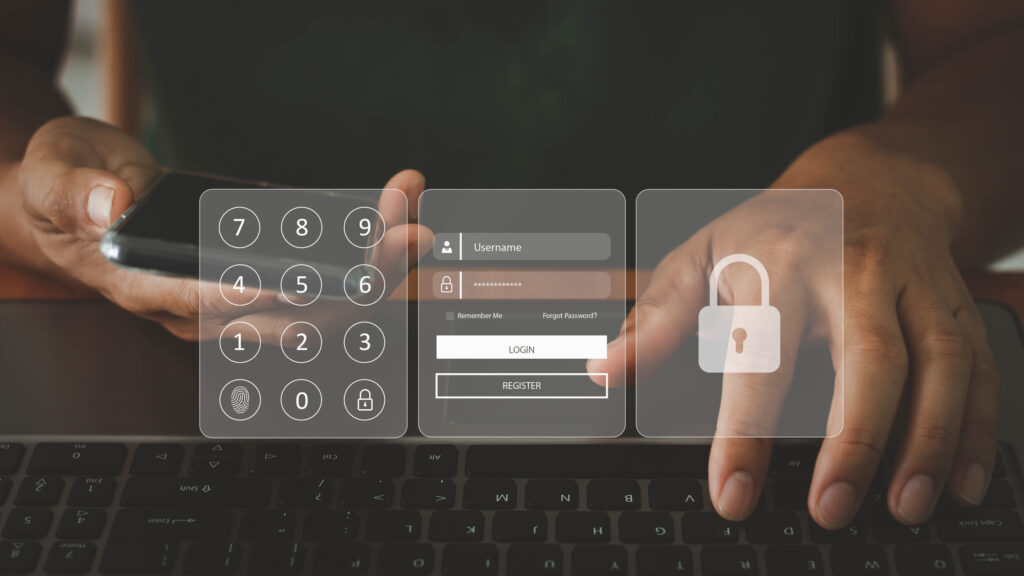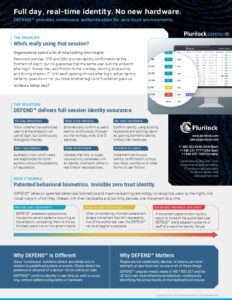In the rapidly evolving landscape of cybersecurity, one of the paramount concerns is the protection of sensitive information and systems from unauthorized access. Authentication, the process of verifying the identity of a user, plays a pivotal role in ensuring the security of digital assets. Traditional authentication methods, such as username and password combinations, have become susceptible to sophisticated attacks, leading to the exploration and implementation of more advanced techniques. Passive authentication emerges as a promising paradigm, providing a robust layer of security without compromising user experience. This deep dive will delve into the intricacies of passive authentication, exploring its definition, significance, and the profound impact it has on cybersecurity.
Understanding Passive Authentication
Definition and Principles
Passive authentication is a novel approach that focuses on continuously and unobtrusively verifying the identity of a user throughout their interaction with a system. Unlike active authentication, which requires explicit user input, passive authentication operates in the background, seamlessly monitoring user behavior, biometric data, and contextual factors to ascertain identity. The underlying principle is to create a frictionless and continuous authentication process that adapts dynamically to the user’s actions.
Passive authentication leverages a variety of factors, including behavioral biometrics, device attributes, and contextual information, to establish a comprehensive profile of the user. Behavioral biometrics involve analyzing patterns such as typing speed, mouse movements, and touchscreen gestures, which are unique to individuals. Device attributes encompass information about the user’s device, such as location, IP address, and hardware characteristics. Contextual information considers the broader context of the user’s actions, taking into account factors like time of day, location changes, and the applications being accessed.
Machine Learning and Artificial Intelligence
Machine learning (ML) and artificial intelligence (AI) are integral components of passive authentication systems. These technologies enable the system to learn and adapt to evolving user behavior, constantly refining the accuracy of identity verification. ML algorithms analyze vast datasets generated by user interactions, identifying patterns and anomalies that may indicate fraudulent activity. As the system accumulates more data, its predictive capabilities improve, enhancing the overall effectiveness of passive authentication.
The Significance of Passive Authentication
Enhanced Security
Passive authentication addresses several shortcomings of traditional authentication methods, significantly bolstering security. Password-based systems are prone to vulnerabilities such as brute-force attacks, phishing, and credential stuffing. Passive authentication, by continuously validating identity through behavioral biometrics and contextual analysis, adds an additional layer of defense against these threats.
Moreover, passive authentication minimizes the reliance on static credentials, reducing the risk associated with stolen or compromised passwords. Since the system continuously monitors user behavior, any deviation from established patterns triggers alerts, allowing for timely intervention to prevent unauthorized access.
User Experience and Frictionless Authentication
A noteworthy advantage of passive authentication is its positive impact on user experience. Traditional authentication methods often introduce friction, requiring users to repeatedly enter credentials or undergo additional verification steps. This can lead to frustration and negatively impact productivity.
Passive authentication, on the other hand, operates seamlessly in the background, minimizing disruptions for legitimate users. By leveraging behavioral biometrics and contextual information, the system creates an invisible layer of security that adapts to the user’s natural interactions. This results in a smoother and more user-friendly authentication experience, enhancing overall satisfaction.
Adaptive and Risk-Based Authentication
Passive authentication introduces the concept of adaptive and risk-based authentication, where the level of scrutiny applied to user verification dynamically adjusts based on perceived risk. Traditional authentication methods typically employ a one-size-fits-all approach, subjecting all users to the same level of scrutiny.
Passive authentication systems, powered by AI and ML, continuously assess the risk associated with user interactions. Unusual patterns or suspicious behavior trigger heightened authentication measures, while routine activities proceed with minimal intervention. This adaptive approach allows organizations to prioritize security efforts where they are most needed, optimizing the balance between security and user convenience.
In-Depth Analysis of Passive Authentication
Behavioral Biometrics: The Core Component
At the heart of passive authentication lies the analysis of behavioral biometrics. This involves the study of unique patterns and characteristics inherent in an individual’s behavior, such as typing dynamics, mouse movements, and touchscreen gestures. Behavioral biometrics offer a dynamic and adaptive approach to identity verification, reflecting the subtleties of human interaction.
Typing Dynamics
Analyzing typing dynamics involves capturing the rhythm, speed, and pressure applied while typing on a keyboard. Each individual has a distinct way of typing, influenced by factors such as finger length, muscle memory, and typing habits. Passive authentication systems continuously monitor these nuances, creating a baseline for each user.
Deviation from established typing patterns can be indicative of unauthorized access. For example, if a user typically types with a certain speed and suddenly exhibits a significantly different pace, it may trigger an alert for further authentication measures. This level of granularity in behavioral biometrics enhances the accuracy of passive authentication systems.
Mouse Movements
Mouse movements contribute valuable insights into user behavior. Factors such as acceleration, speed, and the trajectory of the mouse cursor are unique to each individual. Passive authentication systems track these patterns over time, building a comprehensive profile of user behavior.
Anomalies in mouse movements, such as erratic or unusually precise cursor behavior, can signify potential security threats. By continuously monitoring and analyzing these patterns, passive authentication systems add an extra layer of protection against identity theft or unauthorized access.
Touchscreen Gestures
With the proliferation of touch-enabled devices, touchscreen gestures have become a prominent aspect of user interaction. Passive authentication extends its reach to capture and analyze these gestures, including swipe patterns, pressure applied, and the timing of taps.
Touchscreen gestures provide an additional dimension to behavioral biometrics, especially in mobile and tablet environments. The system learns and adapts to the unique way individuals interact with touchscreens, offering a robust authentication mechanism that aligns with modern user interfaces.
Device Attributes and Contextual Information
In addition to behavioral biometrics, passive authentication relies on device attributes and contextual information to establish a comprehensive understanding of user identity.
Device Attributes
Device attributes encompass information related to the user’s hardware, software, and network environment. Elements such as the device’s IP address, operating system version, and hardware characteristics contribute to the overall user profile. Passive authentication systems continuously validate these attributes, ensuring consistency with the user’s established patterns.
Any deviation, such as a sudden change in device type or a connection from an unfamiliar location, may trigger heightened authentication measures. This adaptability based on device attributes enhances the system’s resilience against identity theft and unauthorized access attempts.
Contextual Information
Understanding the broader context of user interactions is crucial for effective passive authentication. Contextual information considers factors such as the time of day, location changes, and the specific applications being accessed. By analyzing these contextual cues, the system gains insights into the legitimacy of user actions.
For example, if a user typically accesses sensitive information during regular working hours from a known location and suddenly attempts access during the middle of the night from a different location, it raises a red flag. Passive authentication systems use this contextual awareness to dynamically adjust the level of scrutiny applied to identity verification, ensuring a responsive and risk-aware approach.
Machine Learning and Adaptive Authentication
Machine learning algorithms form the backbone of passive authentication systems, enabling them to adapt and evolve in response to changing user behavior and emerging threats.
Continuous Learning
Passive authentication systems engage in continuous learning, leveraging historical data to refine their understanding of user behavior. As users interact with the system over time, the machine learning algorithms analyze patterns, identify anomalies, and update the user profile accordingly.
This continuous learning process enhances the system’s accuracy in distinguishing between legitimate and fraudulent behavior. It allows the system to adapt to evolving user habits, ensuring that the authentication mechanism remains effective in the face of changing circumstances.
Anomaly Detection
Anomaly detection is a critical aspect of passive authentication that is made possible through machine learning. By establishing a baseline of normal user behavior, the system can identify deviations that may indicate potential security threats. Machine learning algorithms excel at detecting subtle anomalies that may go unnoticed by traditional security measures.
For example, if a user typically accesses a specific set of applications in a particular sequence and suddenly deviates from this pattern, the system can flag the deviation as a potential anomaly. Anomaly detection powered by machine learning enhances the proactive nature of passive authentication, allowing organizations to respond swiftly to emerging threats.
Risk-Based Authentication
Passive authentication introduces the concept of risk-based authentication, where the level of scrutiny applied to user verification is dynamically adjusted based on perceived risk. Machine learning algorithms play a crucial role in assessing the risk associated with user interactions and triggering appropriate authentication measures.
Low-risk activities proceed with minimal intervention, preserving a frictionless user experience. In contrast, high-risk events, such as unusual access patterns or behavioral anomalies, prompt the system to implement additional authentication measures, such as multi-factor authentication or step-up authentication.
Privacy and Ethical Considerations
While passive authentication offers significant advantages in terms of security and user experience, it also raises important privacy and ethical considerations.
Data Privacy
Passive authentication systems collect and analyze a wealth of user data, including behavioral biometrics, device attributes, and contextual information. Protecting the privacy of this sensitive information is paramount to building trust with users.
Organizations implementing passive authentication must adhere to robust data privacy policies and comply with relevant regulations, such as the General Data Protection Regulation (GDPR) or the California Consumer Privacy Act (CCPA). Transparency in how user data is collected, stored, and utilized is essential for maintaining user confidence in the security of the authentication process.
Informed Consent
Given the passive nature of this authentication method, users may not be explicitly aware of the continuous monitoring of their behavior. Providing clear and transparent information about the use of passive authentication is crucial for obtaining informed consent.
Organizations should communicate the benefits, risks, and implications of passive authentication to users, ensuring they have a comprehensive understanding of how their data is utilized. Obtaining explicit consent demonstrates a commitment to ethical practices and reinforces the trustworthiness of the authentication process.
Bias and Fairness
Machine learning algorithms, central to passive authentication, are susceptible to bias if not carefully trained and monitored. Bias in the algorithms can result in discriminatory outcomes, disproportionately affecting certain user groups.
Organizations must implement measures to address bias in machine learning models, including diverse and representative training datasets, ongoing monitoring for bias, and regular updates to the algorithms. Ensuring fairness in passive authentication is not only an ethical imperative but also a legal requirement in many jurisdictions.
Case Studies: Real-World Applications of Passive Authentication
To illustrate the practical impact of passive authentication, let’s explore two case studies highlighting its effectiveness in real-world scenarios.
Case Study 1: Financial Services
A leading financial institution implements passive authentication to enhance the security of its online banking platform. The system continuously monitors user behavior, including typing dynamics, mouse movements, and device attributes. Machine learning algorithms analyze historical data to establish a baseline for each user.
In a real-world scenario, a user attempts to log in from a new device in a different geographical location. While the traditional authentication system might flag this as a potential security threat and prompt the user for additional verification, passive authentication seamlessly adapts to the context. The system recognizes the unusual access pattern but, based on the user’s established behavior and low-risk activities, allows the login to proceed with minimal friction.
However, if the user were to exhibit erratic mouse movements and typing patterns inconsistent with their historical behavior, the passive authentication system would recognize the anomaly and trigger a step-up authentication process. This might involve sending a one-time passcode to the user’s registered email or mobile device for additional verification.
In this case, passive authentication not only enhances security by continuously monitoring user behavior but also optimizes the user experience by minimizing disruptions for routine activities while proactively responding to potential threats.
Case Study 2: Healthcare
A healthcare organization adopts passive authentication to secure access to electronic health records (EHRs) and sensitive patient information. The system incorporates behavioral biometrics, device attributes, and contextual information to create a comprehensive profile for each healthcare professional accessing the EHR system.
During a routine day, a physician accesses patient records from a hospital computer during working hours. The passive authentication system, aware of the physician’s established patterns, allows seamless access without additional authentication steps.
Later that day, the same physician attempts to access patient records from a coffee shop using a personal tablet. While the contextual information indicates a change in location, the system recognizes this as a legitimate deviation from the usual access pattern. The physician’s established behavioral biometrics and the low-risk nature of the activity contribute to the system’s decision to permit access without additional friction.
However, if an attempt were made to access patient records at an unusual time, such as late at night, or from a device with inconsistent attributes, the passive authentication system would trigger a heightened authentication process. This could involve multi-factor authentication or a challenge-response mechanism to ensure the legitimacy of the access request.
In the healthcare context, passive authentication not only strengthens security by continuously monitoring user interactions but also aligns with the dynamic nature of healthcare professionals’ work, accommodating legitimate variations in access patterns while remaining vigilant to potential security risks.
Conclusion
Passive authentication represents a transformative approach to identity verification in the realm of cybersecurity. By seamlessly integrating with user behavior, leveraging behavioral biometrics, device attributes, and contextual information, and harnessing the power of machine learning, passive authentication introduces a paradigm shift in balancing security and user experience.
The significance of passive authentication lies in its ability to enhance security by continuously monitoring user behavior, adaptively adjusting authentication levels based on risk, and mitigating the limitations of traditional authentication methods. The frictionless user experience offered by passive authentication addresses the challenges posed by cumbersome authentication processes, contributing to increased user satisfaction and productivity.
As organizations navigate the landscape of cybersecurity, the adoption of passive authentication is poised to play a pivotal role in fortifying defenses against evolving threats. However, this technological evolution brings forth important considerations related to data privacy, informed consent, bias, and fairness. Striking the right balance between security, user experience, and ethical considerations is essential for the successful implementation of passive authentication in diverse domains.
In conclusion, passive authentication stands as a testament to the ongoing evolution of cybersecurity strategies, ushering in an era where identity verification is seamlessly integrated into the fabric of user interactions, creating a more secure and user-friendly digital landscape.














